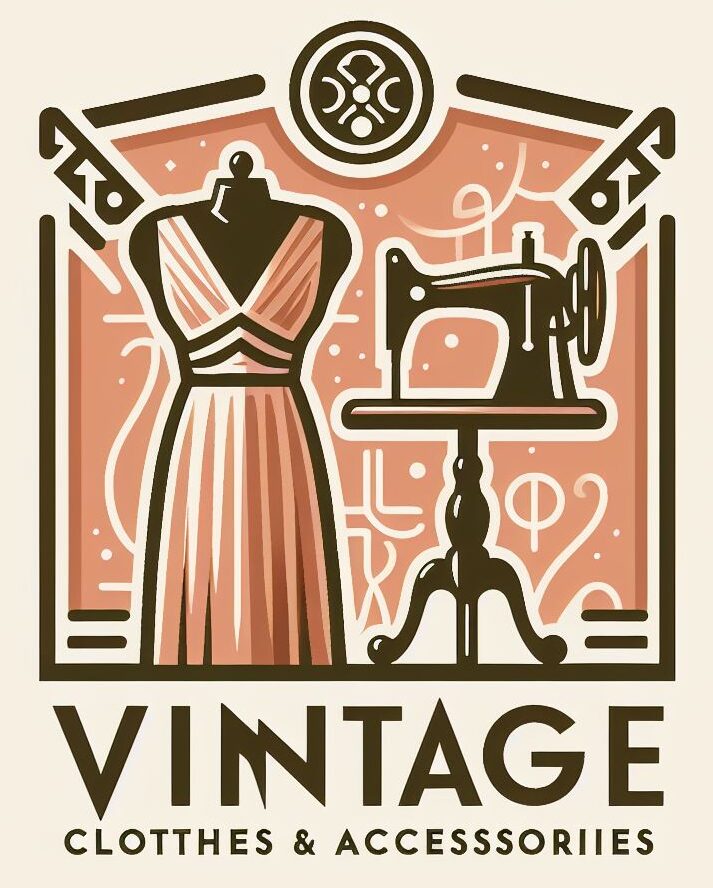The wearing of shoes are an integral part of a woman’s ensemble, whether it be part of today’s modern world or from a bygone era. The meaning of a shoe comes firstly from the need to protect and cover ones feet from harsh climate, rough terrain or venomous creatures thus keeping them cushioned and making walking more comfortable. There is much to be said about the ancient beginnings of shoes and what it meant to be protected – whether it was culturally or symbolically, we have come a long way in how we use and see shoes as a necessity. Secondly, shoes have certainly become a big fashion statement in modern society, so If the Shoe Fits – Wear Vintage?
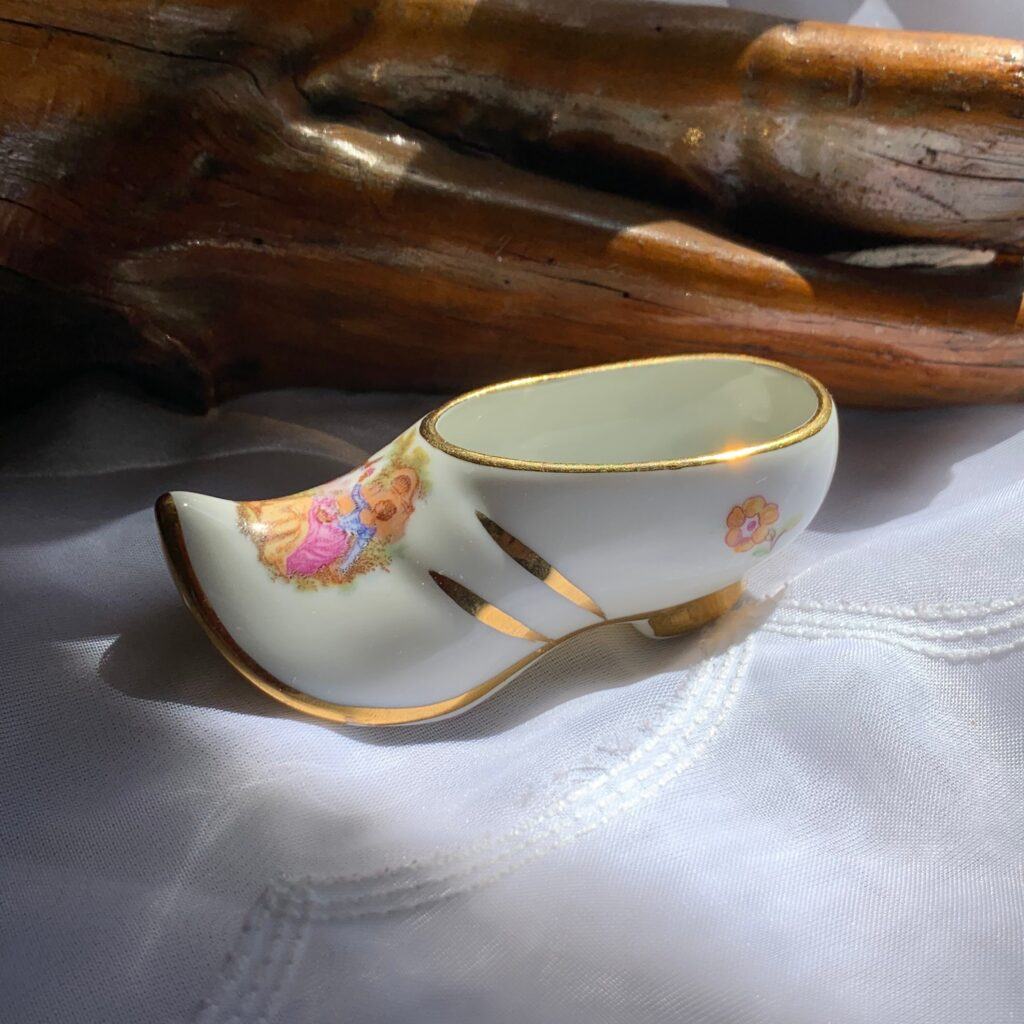
The Early Beginnings of Shoes
The earliest shoes ever recorded were sandals, derived from the latin word “Sandalium” and date back to 7000 – 8000 BCE which were made of natural material called sagebrush bark found in a cave in Oregon USA. However the Anasazi Tribe who were an ancient indigenous tribe of American people living in South Western United States, wore sandals which were braided woven and flexible, fastened to ones feet in a V shape strap, were recorded as far back as 8 -10,000 years ago, whilst moccasins which are made of animal hide were also known to be worn by humans as far back as 40,000 years ago and especially Indigenous Americans as well as Early Settlers.
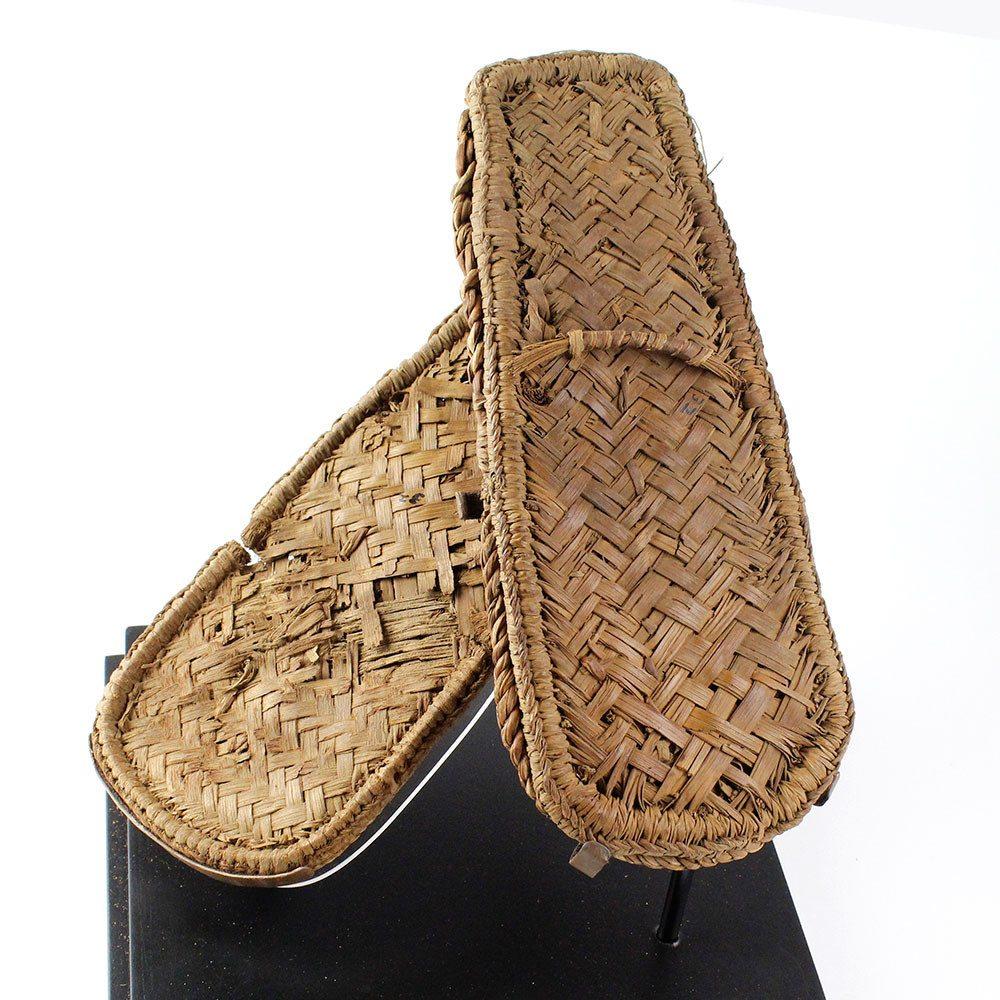
Leather shoes can be traced back to 3500 BCE, but the oldest ones were found around 5,500 years ago in a cave in Armenia which were excavated by Archeologists and made from cowhide with grass lining. Other hides used 200 years earlier to make footwear included, deerskin for the sides and bearskins as a base pulled tight onto the foot with a bark string net, which offered great heat retention. Drawings of hunters found in a cave in Spain, suggest humans started wearing shoes for protection around 15,000 years ago. Ancient Civilizations wore the thong sandal made from various types of materials. One such was found in Europe and made from the pith of the Papyrus plant. These papyrus leaves are similar to thick paper which were also used to write or document on – 15,000 years ago. Early designs were considered as leather foot bags protecting feet from rocks, debris or cold weather.
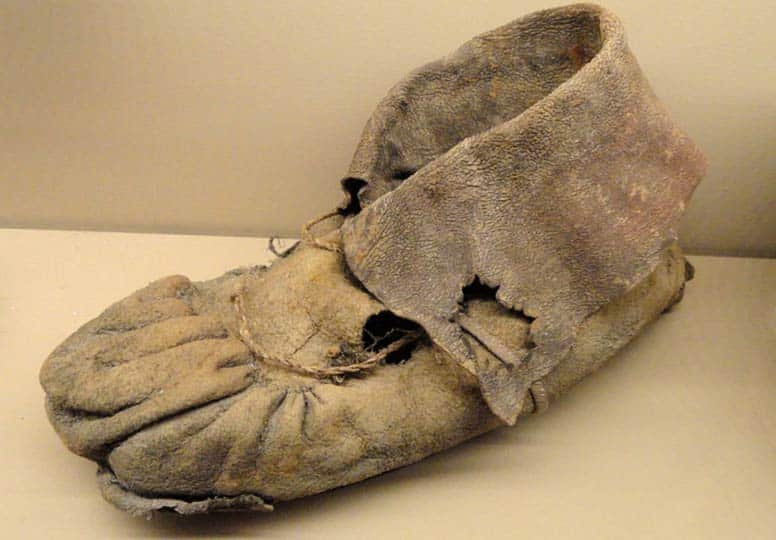
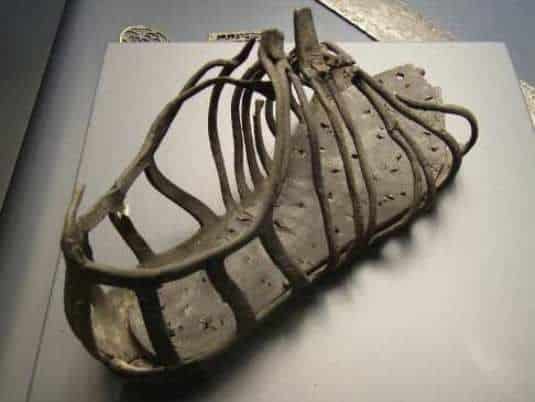
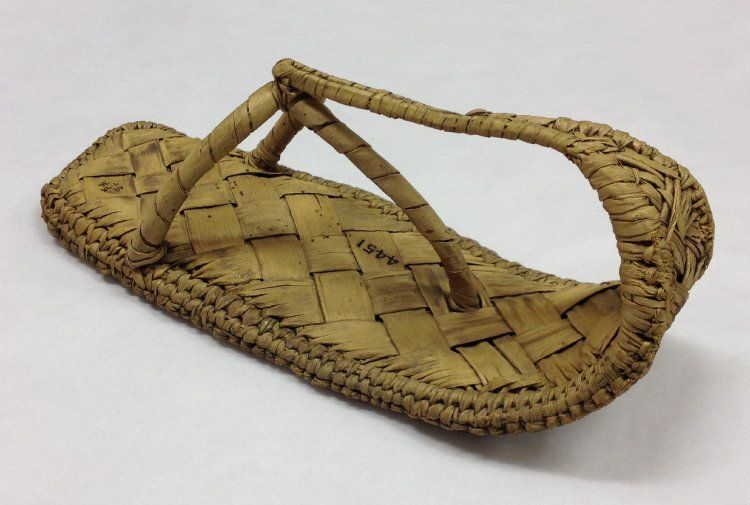
Shoes from the Americas Culture
Around Medieval times, shoes were made using the Turnshoe method which was used during the Middle Ages and was called this because of the type of leather shoe which was turned inside out, and then right side out when completed, hiding the main seam between the sole and vamp, plus sealing it from moisture getting inside which prolonged the life of the shoe. These shoes were quite long in length (up to 2 feet) and would be filled with grass, moss, hair or wool for padding.
The natives in North America wore the Moccasin predominately made from leather or Bison skin and some would adorn them with beads and other decorations, however they were not waterproof so in the wet season or warm summer months people would simply go barefoot. And in South America, they used the Sisal plant to make twine for sandals, but the native Mexicans used Yacca plant for their sandal footwear.

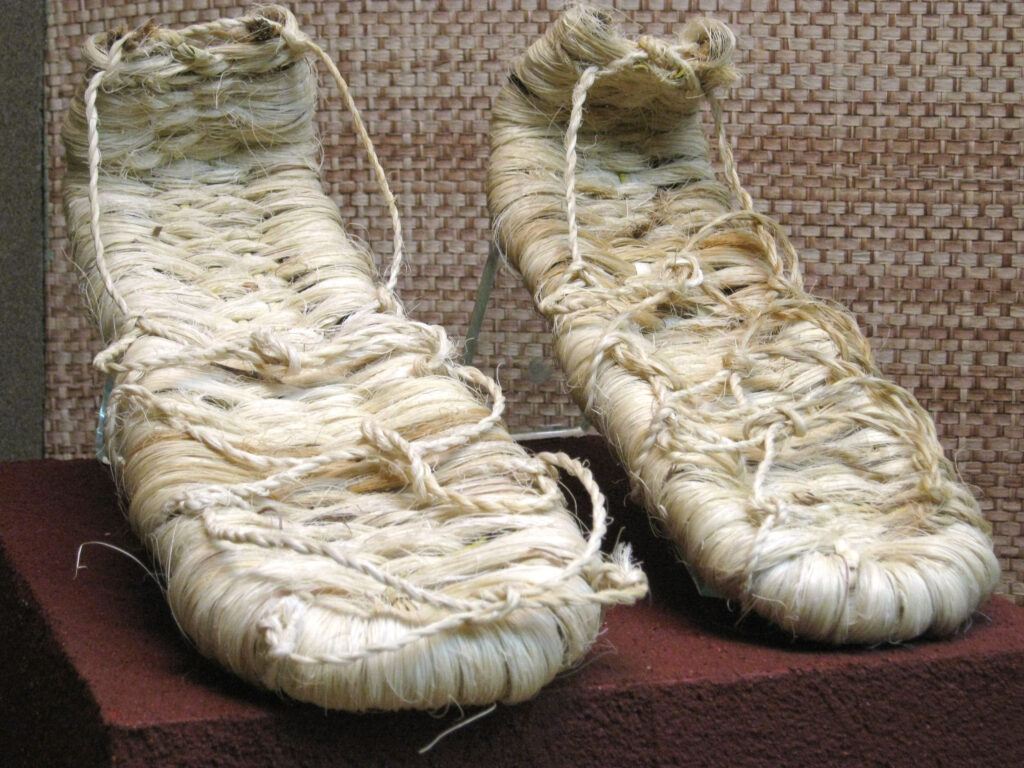
Middle Eastern Traditions
As civilization developed the thong or sandal style of shoe known as the Thebet was also popular with other cultures, but originally was adopted by the ancient Egyptians during the Christian Era in Jerusalem. These shoes were worn by many civilizations and made from a variety of materials such as papyrus or palm leaves by the Ancient Egyptians, rawhide was used by the Maasai ethnic group in Africa, and in India they used wood in their sandals. Even though the sandal was a popular choice of footwear for the Egyptians, Hindus and Greeks they would prefer to go without and wear nothing on their feet as they saw little need for it. However the Egyptians and the Hindus went as far as wearing ornamental footwear which was a “soleless” sandal known as the “Cleopatra” that provided no protection at all.
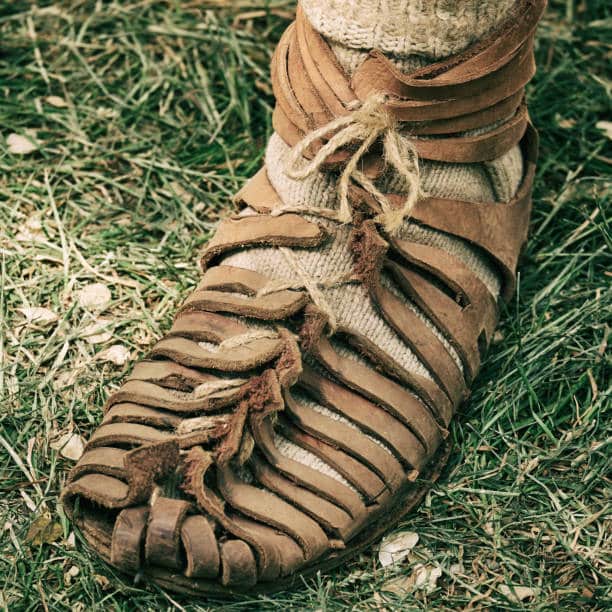
sandals
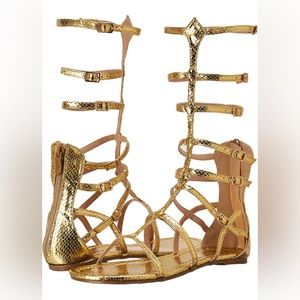

As early battles were fought within the Greek and Roman empires shoes were less worn and as the Romans conquered the Greeks they didn’t see footwear and clothing as the perception that the Greeks did, but saw it as a sign of power and necessity, living in a civilized world. The Greeks viewed footwear as a sign of status or symbolism so only wore them in the Theater to increase their stature. Only Slaves and Paupers did not wear shoes, but neither did the Ancient Olympian runners. Roman soldiers were later issued with correctly aligned footwear which was specifically designed with riveted holes in the insoles to provide better protection and increase the life of the shoe. They were designed with intricacies which would be evident in the insignia of the boot, the higher the rankling of the soldier would be. At 4BC the Greeks finally started wearing shoes indicating the symbolism of their status.
Courtesans would wear leather shoes in light colors and young women who were betrothed would wear white shoes which would come at a cost to lighten them so only the wealthy wore these shoes which also had a message imprinted which would carve in the ground. This custom gave rise to Cobblers that their profession, so many Greek shoemakers made their mark in the Roman empire.
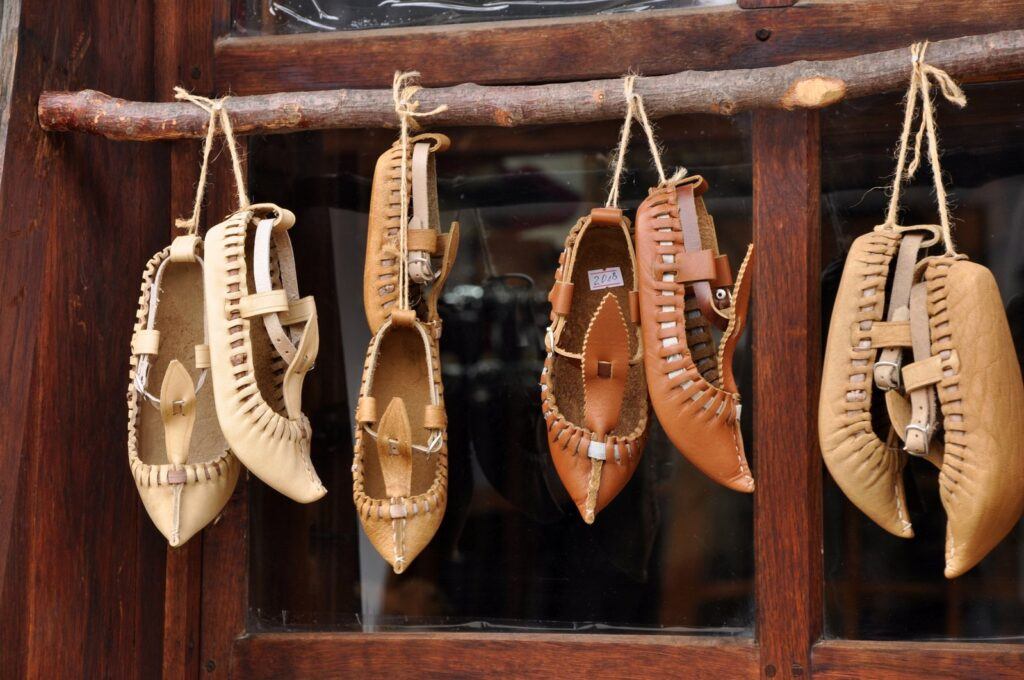
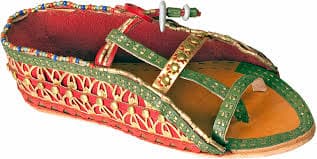
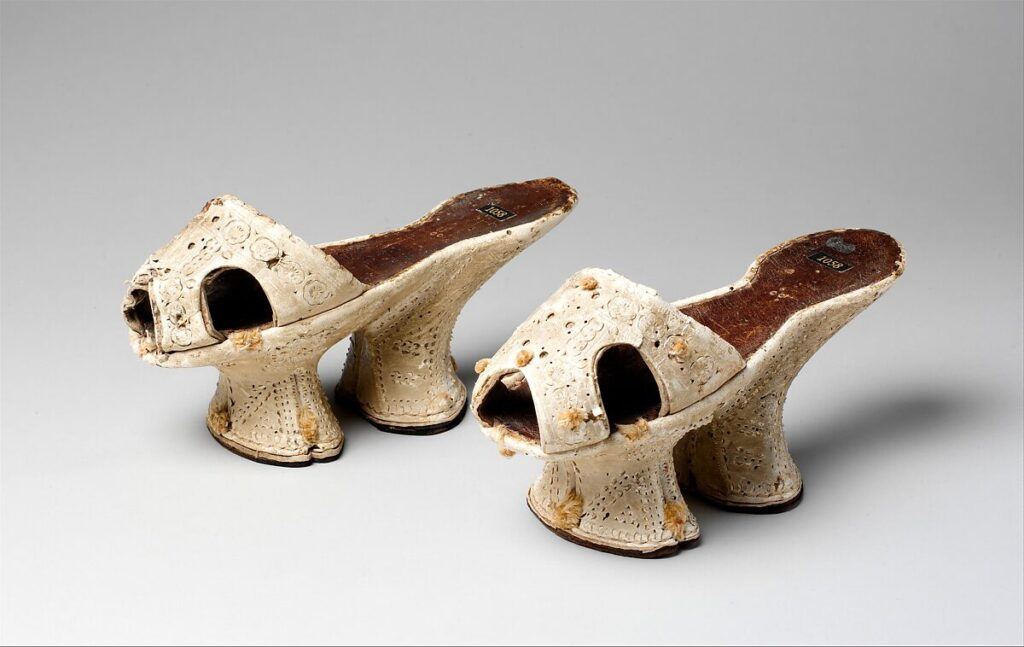
Different Styles Developed
During the 1500’s the Turnshoe Construction was replaced by the Welted Rand method where the upper was sewn to a stiffer sole so the shoe could not be turned inside out. Some shoes were developed with toggled flaps or drawstrings so the leather would tighten around the foot for a better fit, so made sure they would fit closely and be a mirror image of left and right. Pattens became popular in Europe during this time and were made from wood and leather as a protective sandal or clog type shoe worn over normal shoes from mud or street soil.
During the 16th and 17th centuries Chopines which were created in Turkey but were fashionable throughout Europe and then England. Women worn them as a platform shoe to protect their dresses from soil and debris, standing 7-8 inches off the ground. Royalty during the 16th century started wearing higher heels so they could be seen as taller or larger than life. But they also served as a status symbol of authority or wealth, as Aristocrats also wore them and were referred to as “well heeled”.
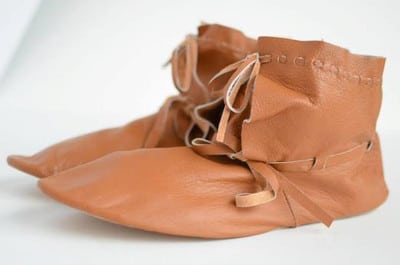

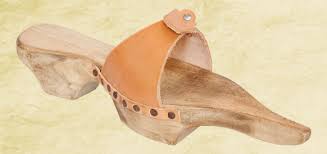
Another type of shoe which developed during this century called the Crakow originating from Poland, a rather pointy shoe or (polaine, as it was known) which was supported by whalebone, tied to the knee to help support walking. The 17th Century saw Louis XIV of France exclusively wearing red heeled shoes with other Royal Court Aristocrats at the time. Eventually, during this century the standard sew on sole leather shoe was devised, and thus remained the standard to this day.
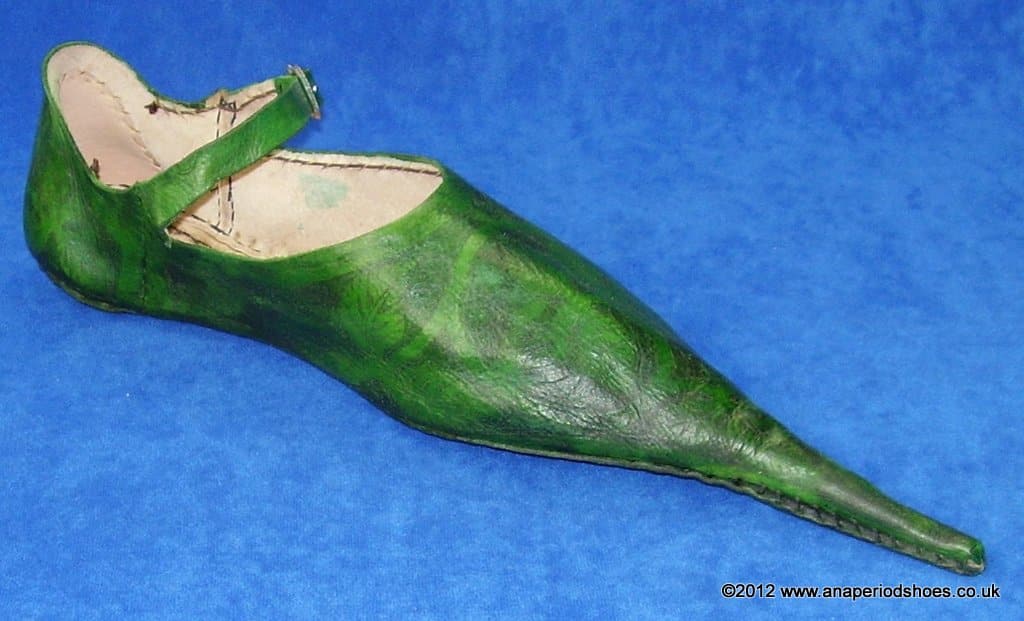

The Industrial Era began
Shoe making became commercialised since the mid 18th Century. The cottage industry soon expanded, as population grew small manufacturers would sell their handcrafted shoes to stock large warehouses. And what started off as a shoe making craft quickly became a mechanised process as mass production was proven to have huge economic gains.
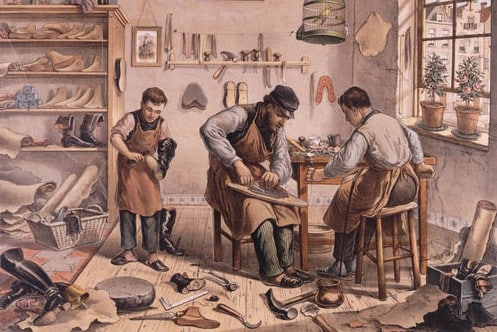
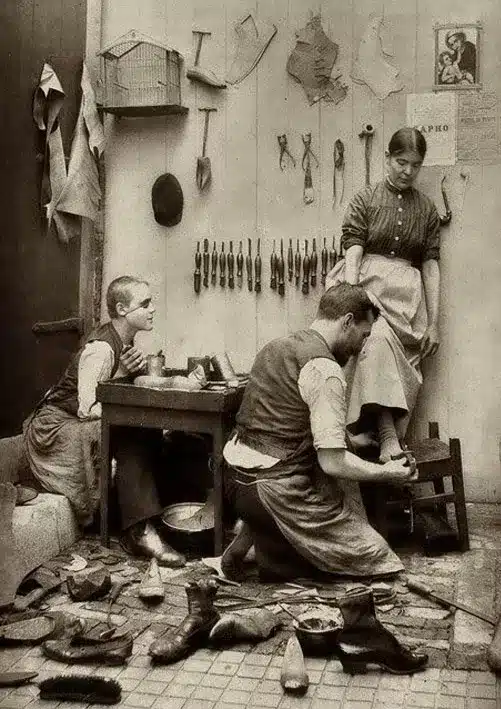
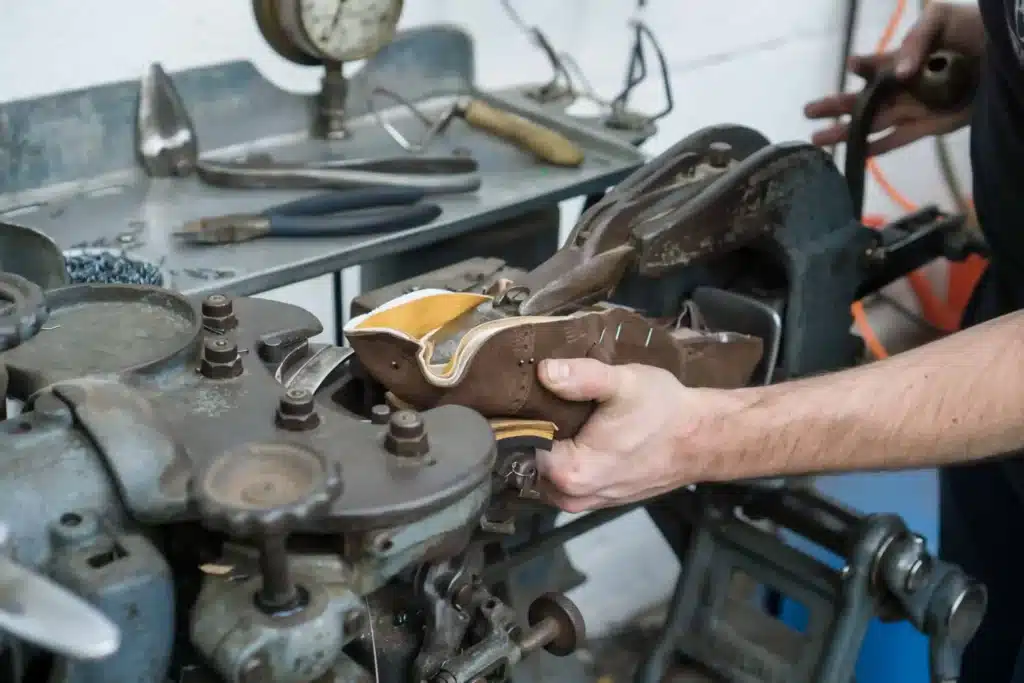
The 19th Century saw Chinese feminists put an end to shoe strapping which was banned in early 1900’s, but didn’t become fully effective till after 1911 – as it was quickly repealed, but the new National Government soon re implemented this ban becoming widespread throughout the cities, but not in the country areas until 1949.
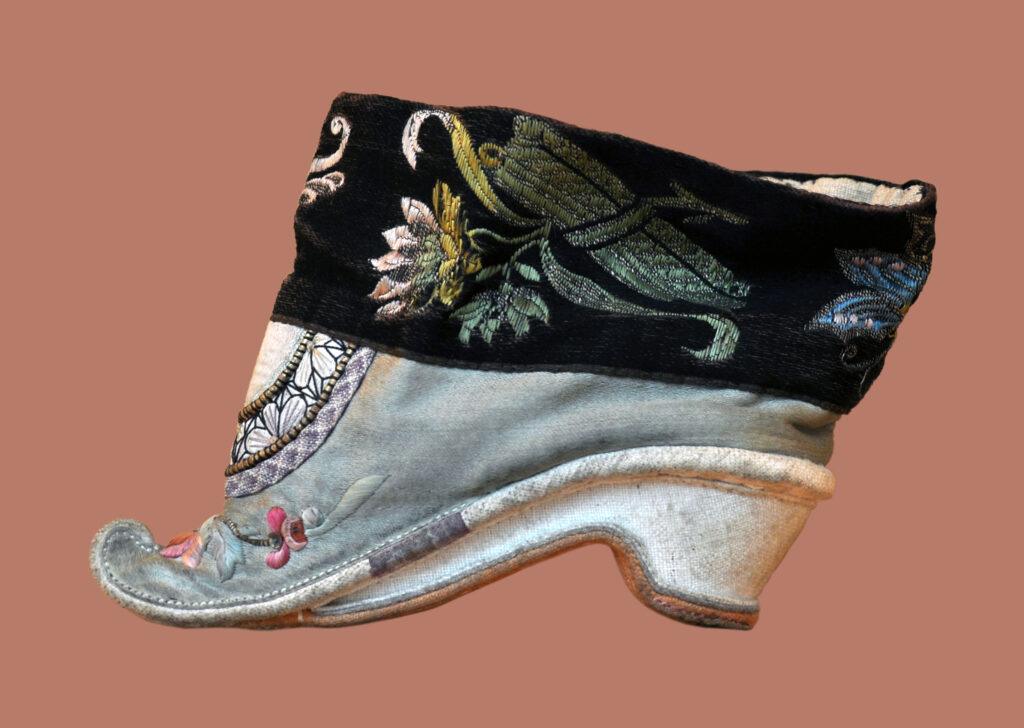
During the Napoleonic Wars an Engineer called Marc Brunel developed machinery which could create and mass produce boots for soldiers in the British Army with a scheme he devised using nails or metallic pins to automatically fasten soles to uppers, and then the use of screws and staples later became a patented system, during that same year. With the support of the Duke of York, 100 of these boots were manufactured daily as they were cheap strong and durable, but were solely made for Army use.
When the Great War ended, and with less demand for military equipment, production ceased in Brunel’s factory. However during the Crimean War new methods and mechanisms for mass production started to peak peoples interest of a longer lasting method of shoe production.
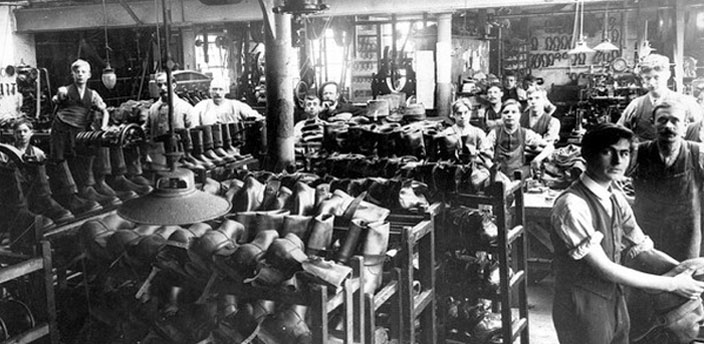
So in the mid 1800s a shoemaker from Leicester in England patented a design for a riveting machine which used an iron plate to push rivetes into the sole, making production more efficient. He also introduced a steam powered rolling machine which cutting and hardening leather. As an alternative to mechanizing shoe making, the sewing machine was introduced prior to the mid 1850’s and this was the start of modernising factories in the US and parts of England. Also a shoe stitching machine which was perfected by late 1860’s, became widely used in the shoe making industry and became popular amongst manufacturers throughout New England. A style reminiscent of the 1800’s, and with an officer uniform style, was fashionable amongst high society is the mens opera shoe, similar types can be bought through Etsy online.
Many other shoe manufacturers quickly adopted these new methods including pegging and finishing in the production line, so more and more stages became automated.
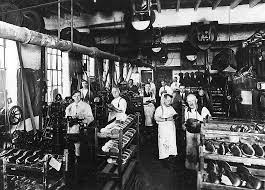
Boots and the Modern Age
With the start of globalization, and from around 1910, we witnessed an industrial process of manufacturing (glued) stitchless shoes. But since the mid 20th Century these shoes were later set apart from the traditional crafting techniques, and used innovative materials such as rubber, synthetic fabrics and plastic. Adhesives were widely used in manufacturing, however leather still remained as the standard form for dress shoes and boots in the modern age.
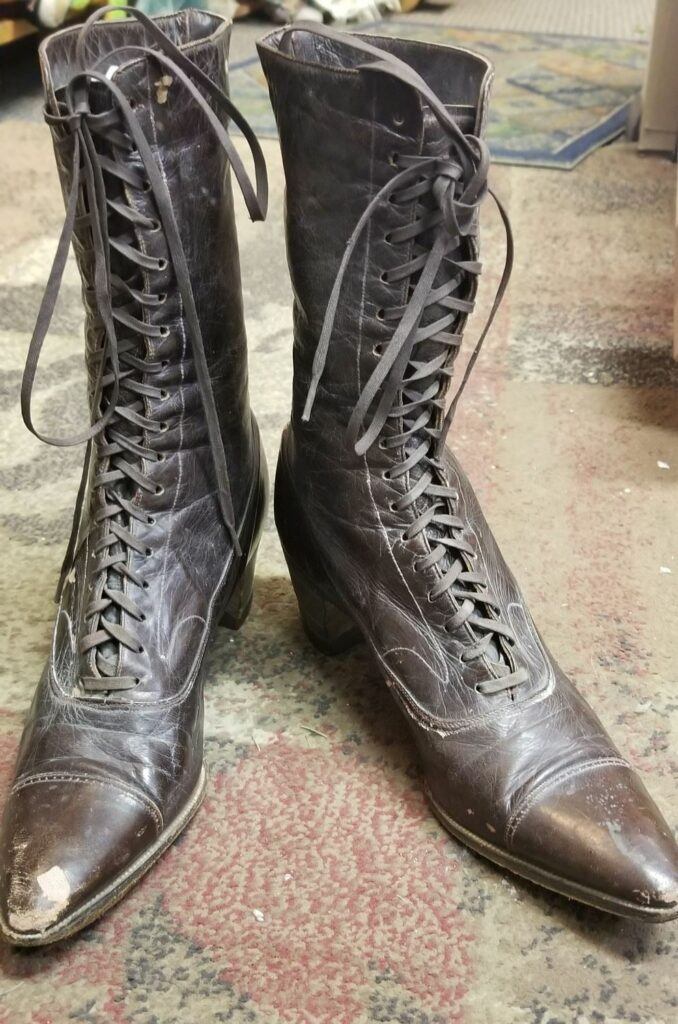
Before the Great War, a french couterier’s wife was one of the first to cause a sensation in Paris and New York with her knee length boots showing off a shorter hemline, but owning a variety of colours to suit different outfits. Victorian style boots are well placed through Amazon with good online ratings, lets learn more about these styles that are available for purchase today. This new style began a wave of popularity amongst women adopting these “Russian Boots” as they were known. These boots had either a pull on tab or a zip closure for a closer fit, worn with knee length skirts they were decorated with elaborate stitching or even a fur trim, but also served as an alternative to baring ankles and calves. At this time the Russian Boots served as protection and comfort, being instrumental in guiding fashion styles in women’s shoes transitioning from leisure class to the world of business women. But this soon was replaced with different versions of the rubber Wellington boot which served as a better protection from the elements.
When the motor car industry took over from horse drawn carriages, and roads were surfaced, there was less of a need for this kind of footwear protection, as it was seen as restrictive and uncomfortable. As fashion trends became more streamlined, footwear was again made to compliment outfits, so the Russian Boot only stayed in fashion till the early 1930’s.
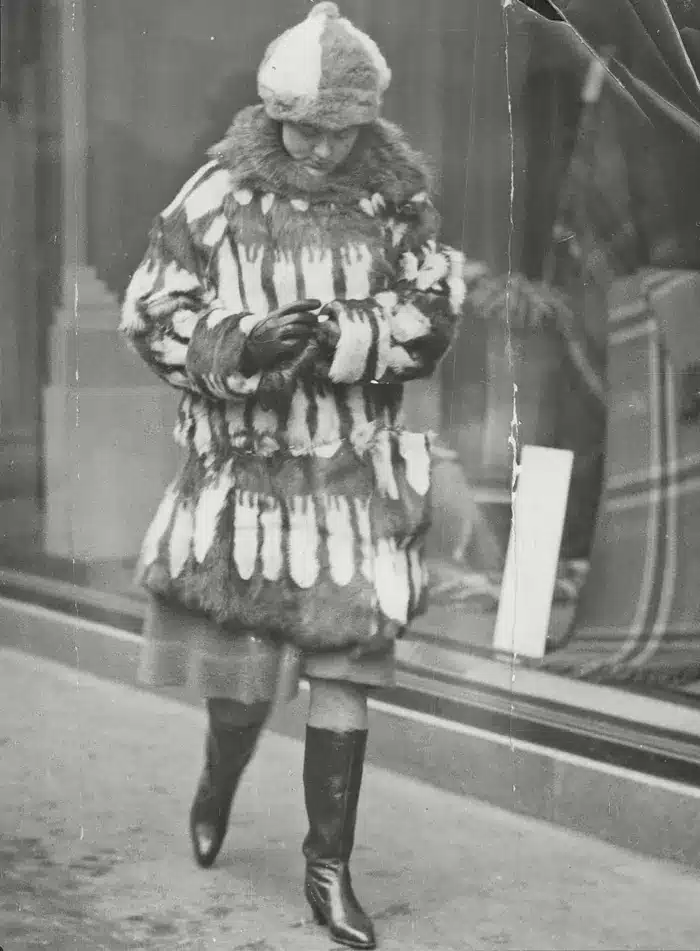
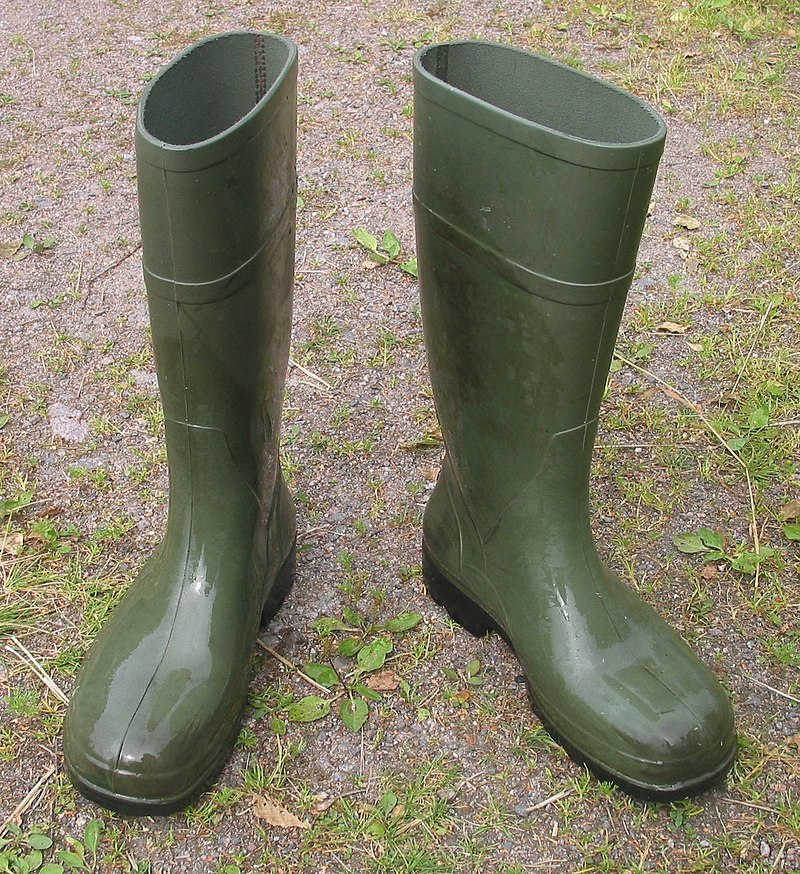
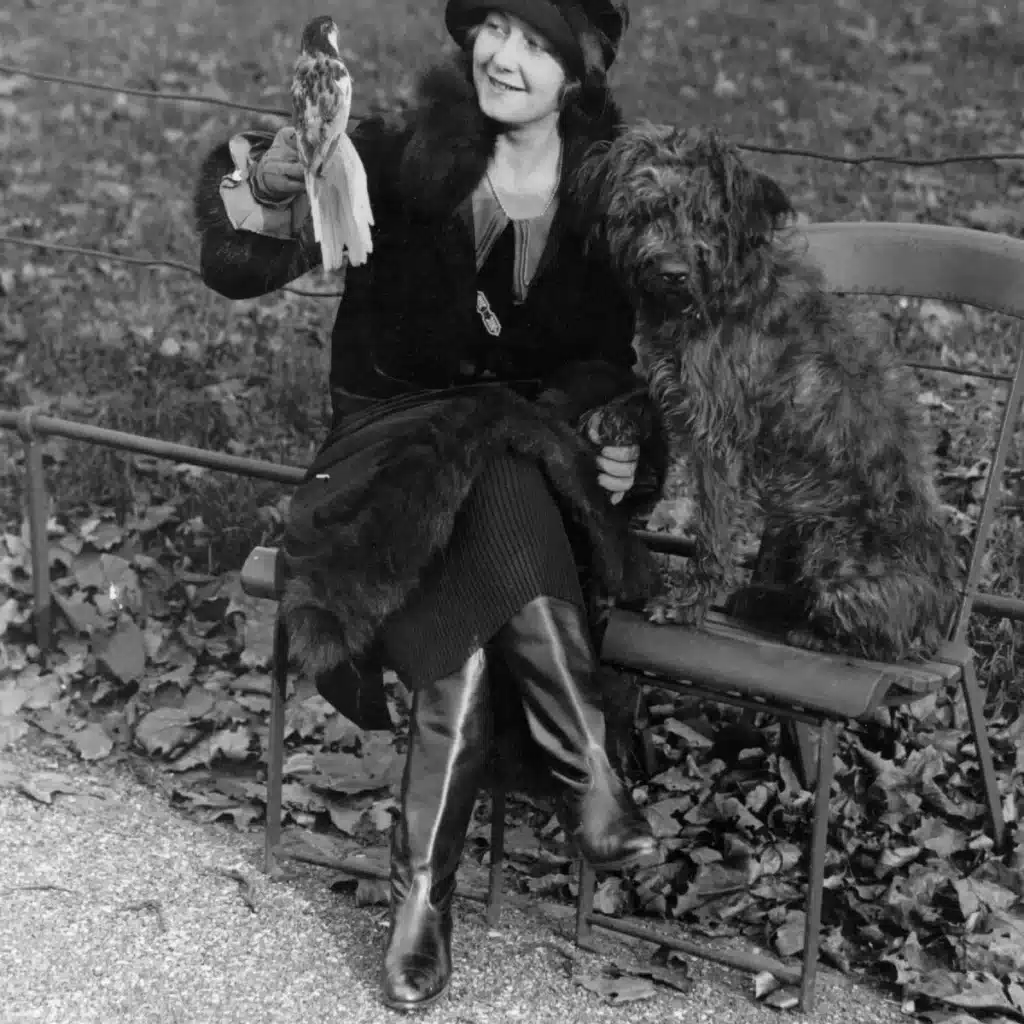
Cowboy boots on the other hand originated in the 1600’s in Spain and were brought to the America’s during this time. In the midwest and far Western United States they saw an idea of the Vaquero style boot, which inspired them to create the Cowboy Boot as we know today. The history of this boot began after the Civil War in 1865 in Texas or Kansas and developed as protection from riding or hiking in the rough terrain, thus calling it the Wild West. These boots became essential tools during riding and gave their legs protection from snake bites, made of durable leather but more so for function than fashion.
The boots were worn all day due to their style comfort and breathability. Cowboys would virtually live in boots all day long – doing all kinds of mustering or farm duties on their ranches.
*As an Affiliate - I may earn a commission if you click one of the links and make a purchase*
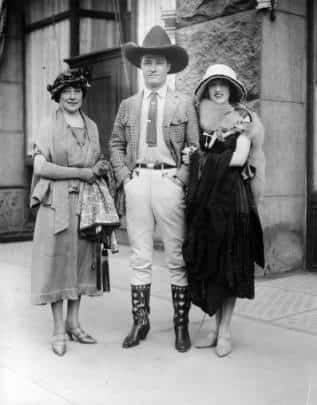
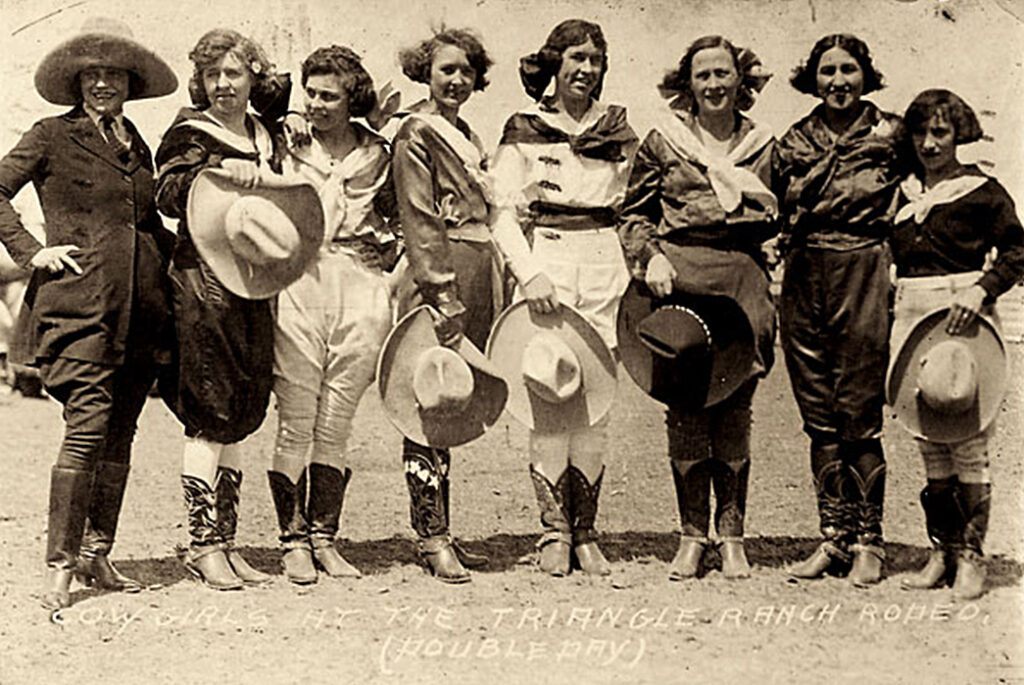
Cobblers would design boots in many styles, with ornate stitching, creating different toe and heel shapes. Leather was the tradition which many stayed with, however in later times boots turned out being made from exotic skins such as Snake leather, Ostrich leather, Alligator and kangaroo leather. Many boots come in different styles, materials and trims – why not shop for these vintage styles today. Due to horse riding being the staple form of transport before motor vehicles, the Wellington Boot in England first formed and was used for this reason – to slip into stirrups easily, however many forms existed since the 11th century including the 18th century Hessian German Military Boot which had a semi rounded toe for easy fitting and the English wore theirs for traditional dressage, racing competitions and alike.
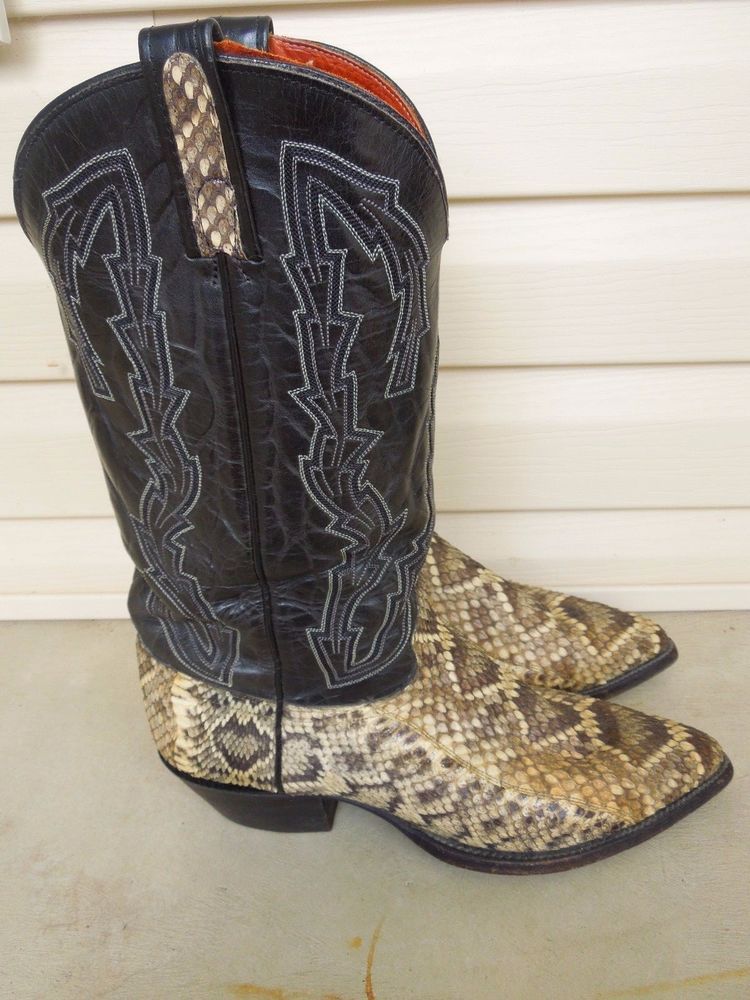
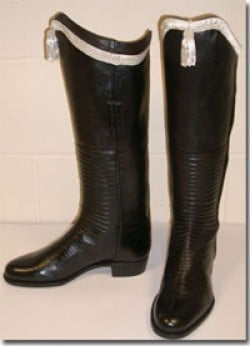
During the Golden Years of Hollywood, many Western Movies became popular with actors setting the scene wearing full western garb and cowboy boots parading how the Wild West was won, including having Models appearing in magazines, which ultimately led to further evolution of this fashion trend. Shoemakers would experiment on different stitching styles and colors, dying the hide to create something unique for their clients which later became a tradition amongst cobblers.
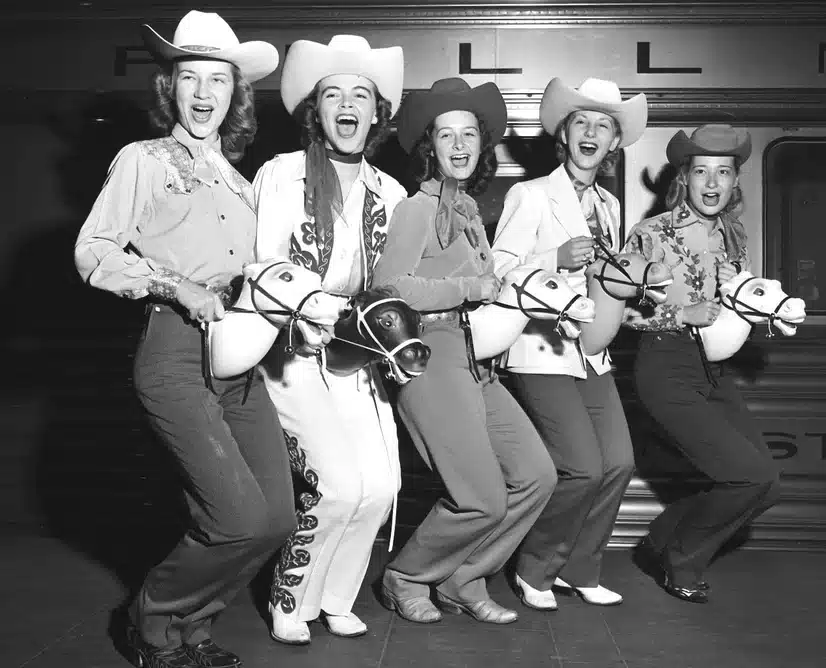
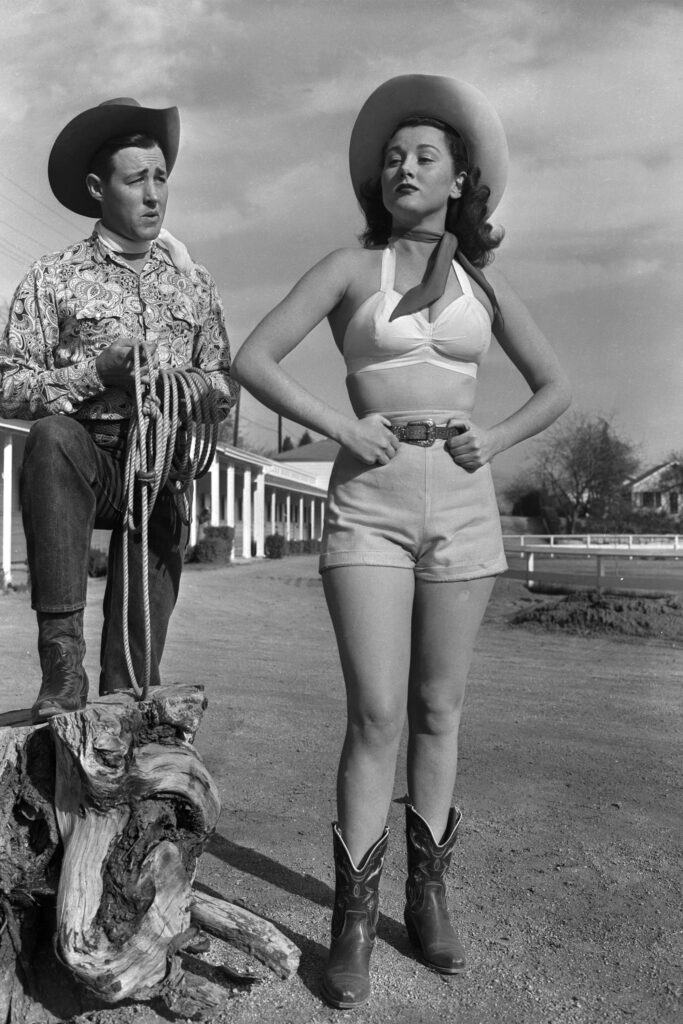
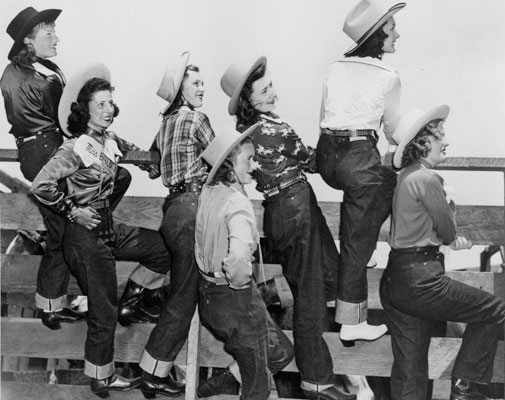
Furthermore, when leather became unobtainable due to high pricing in the 1960’s, a designer named Mary Quant produced affordable machine moulded plastic and vinyl boots in a variety of colours which proved very popular in the late 1960’s to be worn with mini skirts. One designer called Pierre Cardin produced a thigh-high boot made from PVC which extended past the knee, revisiting the style of the early 1960’s Yves Saint Laurent’s couture collection of thigh-length alligator boots as hemlines continued to rise.
Boots with high laces were also popular during this time, akin to those worn in Edwardian times except higher and to the knee. Extravagant above the knee leather boots can be purchased at Selfridges, for a classic stylish look. Another name of boot was called the go-go boot which derived from go-go dancing and became a mainstream fashion accessory for younger women in particular as it was seen as not suitable for mature women to be wearing to work, especially in an office.
In the early 1970’s when fashions started to change again to full length dresses and skirts called Maxi’s, boots were still worn but showed off with a slit on the side of the Maxi revealing a boot which later transformed into a platform sole such as the footwear fashion at the time for women and men.
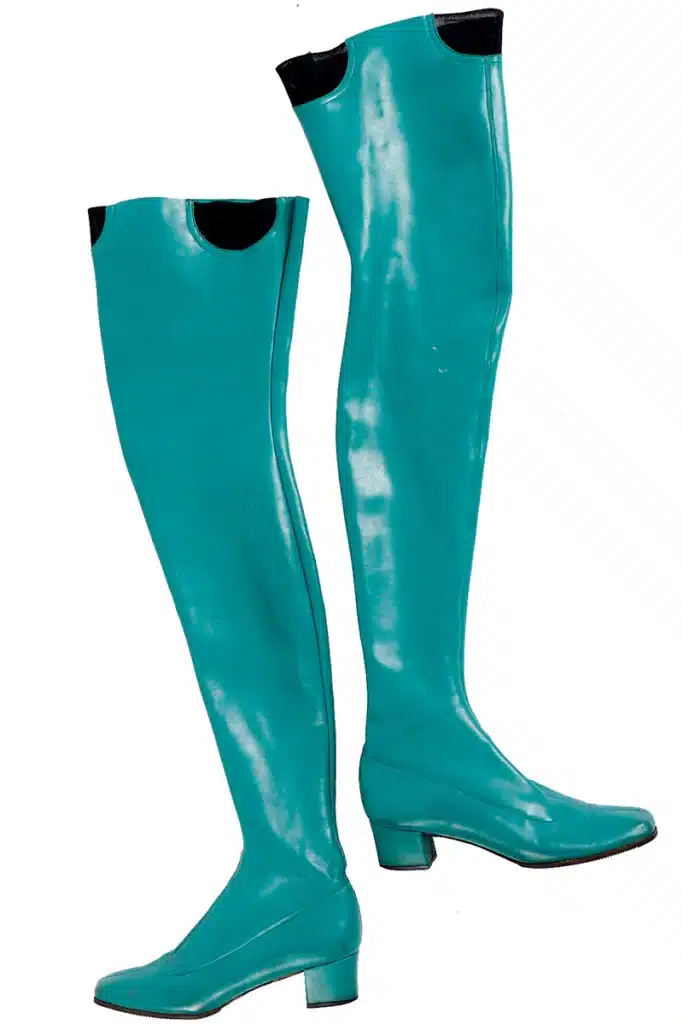
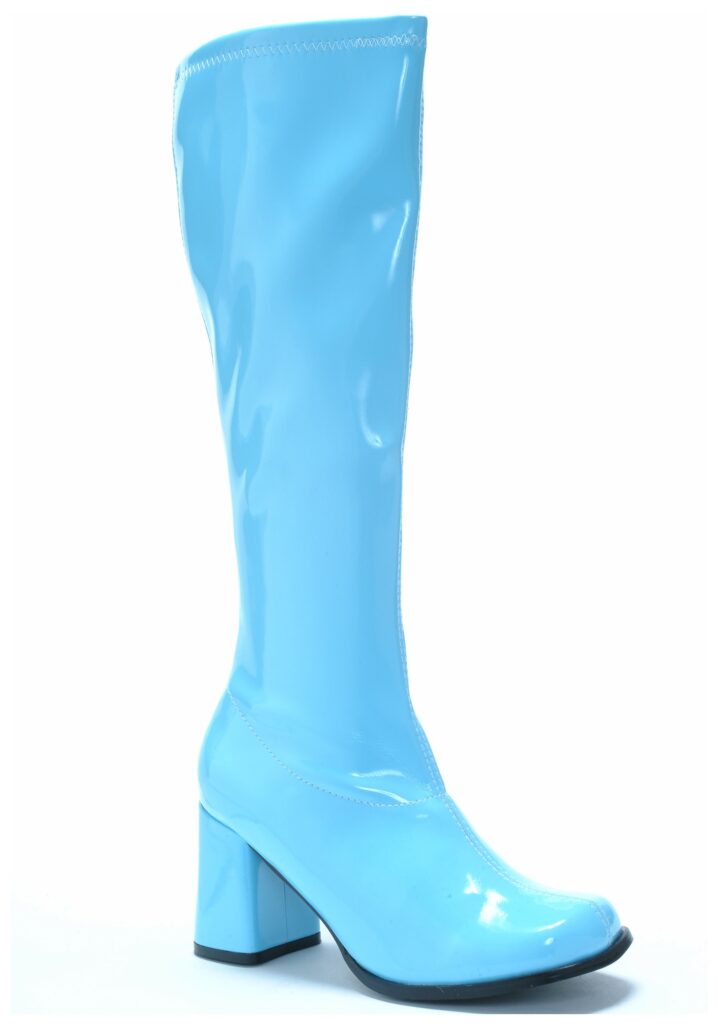
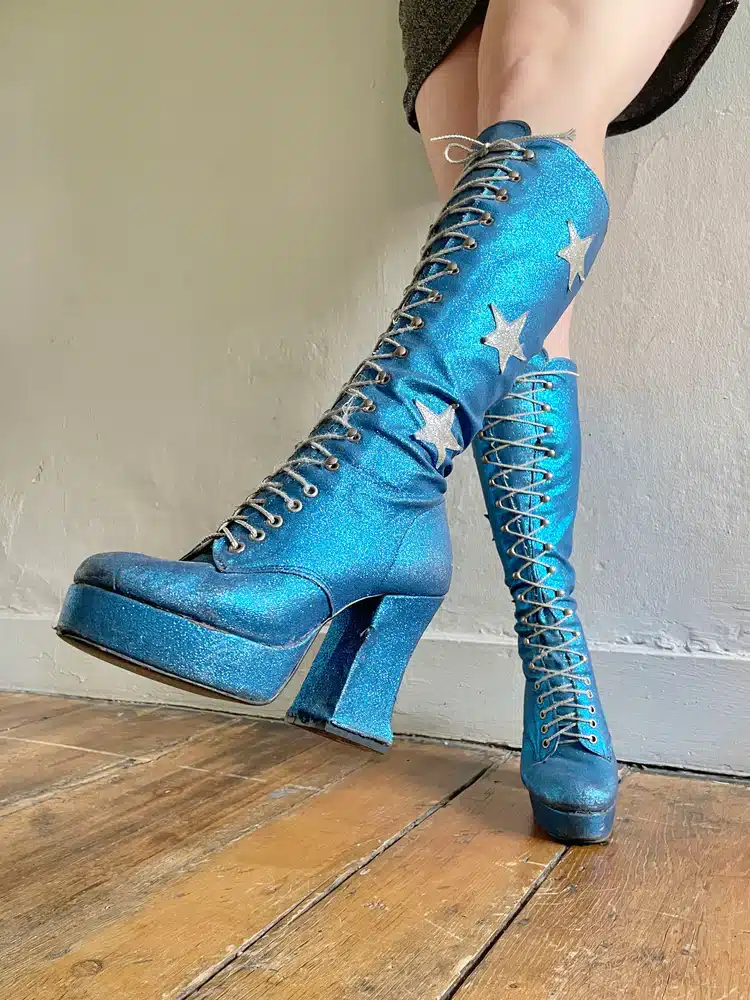
20th Century Footwear
From around the Gatsby Era through to the 1960’s, closed toe shoes were the staple footwear worn in the twentieth century by women – for work and pleasure. The style of heel and sole was considerably altered along the way with Patent leather still being the main substance used. The kitten heel, the block heel and the stiletto came into fashion from the 1950’s through to the 1980’s including the invention of the Thong Sandal proving enormously popular with the Surf Beach Culture of the 1950’s and 1960’s. Rock-a-billy style pump shoes are very popular today and can be purchased here – resembling the era of the pin ups. Some other styles can be purchased at Retro Stage. In addition, Zapaka Vintage have some classic styles – take a look.
During the 1980’s, the court shoe re emerged but with a high stiletto heel, as well as open toe strappy high heeled sandals – with new variations of the 1970’s designs. You can purchase various 80’s inspired court shoe styles here. Other known shoes include variations of the sneaker, walking shoes, work boots with steel capped toes, hiking boots as well as an array of different sporting shoes. Not forgetting ballet, dance and tap shoes just to name a few variations of performing shoes.
With modern designs and use of manufacturing, footwear has evolved significantly from the early ancient times, but is not only seen as fashionable, but wearable with comfort and support in a myriad of styles, colors, textures and uses.
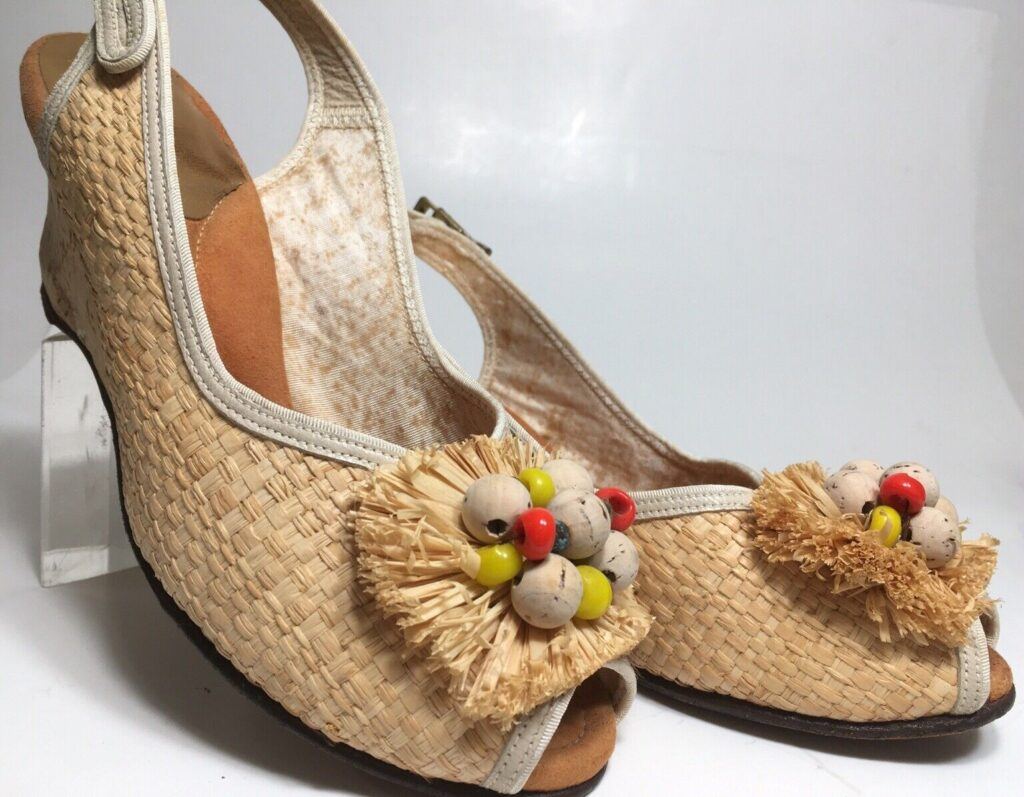
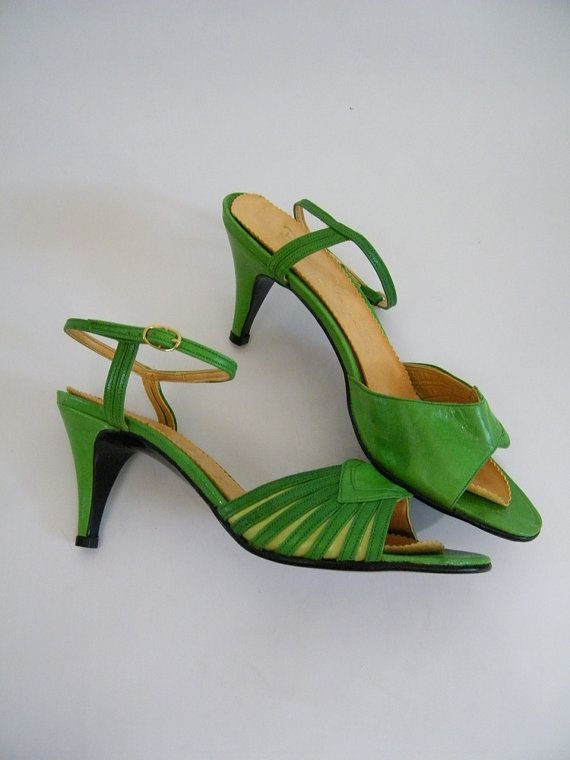
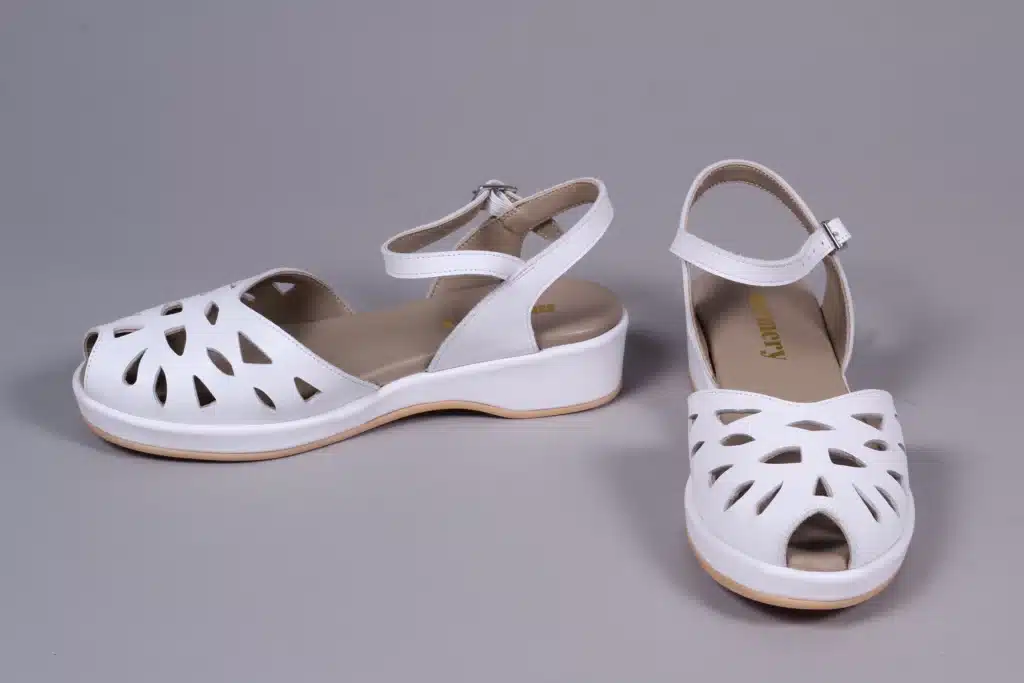
I do hope you enjoyed my nostalgic take on the history of shoes and boots. I personally believe that a shoe can make or break an outfit, so if the shoe fits? Wear Vintage. Any comments on this post, please leave them below.
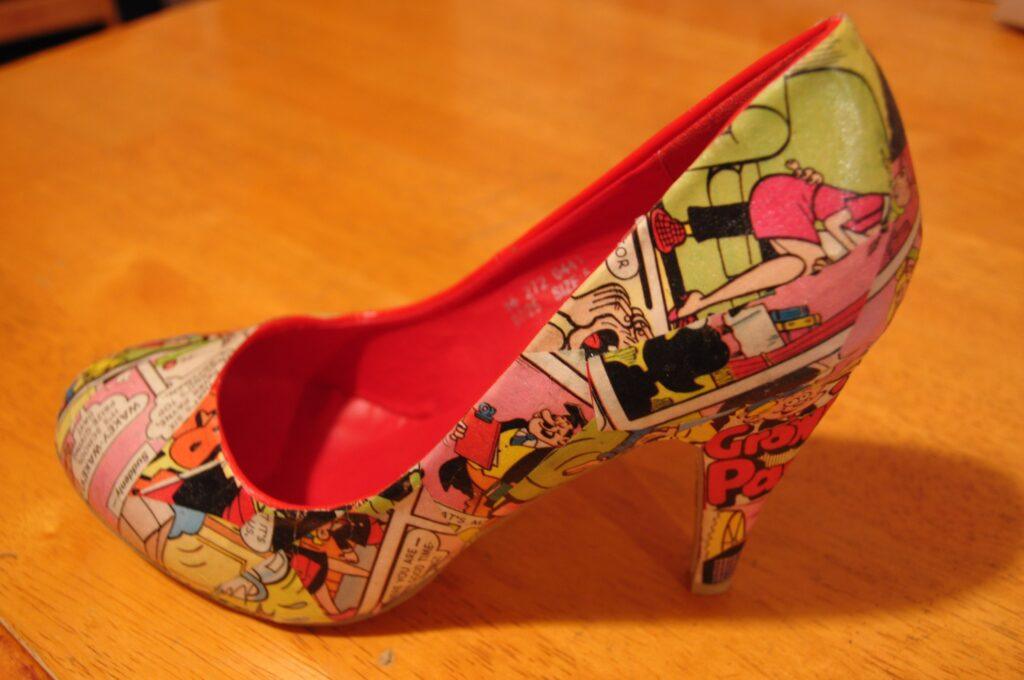
Kind wishes,
Helen
Connect with us via our socials or get in touch below:
